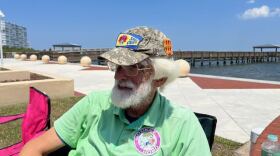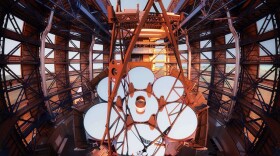The future of medicine on Earth and in space
Varda Space Industries is on a mission to study pharmaceuticals in orbit, without human help.
The recent mission was the first time Varda Space launched their scientific instruments into space, testing a HIV therapy drug autonomously.
The company successfully recovered a capsule which held the experiment on February 21, 2024 after seven months in space.
Varda Space’s Vice President of Business Development, Mark Herbert, said the testing of the therapy drug went better than he could have imagined.
“We actually could complete the successful manufacturing on metastable form while in orbit, again, which was the first fully autonomous manufacturing of a small molecule drug in space in the history of the world,” Herbert said.
Because the capsule Varda Space created is autonomous, VP of Autonomous Systems Wendy Shimata said this technology makes launching missions easier since less people are needed.
“Part of what we want to be able to do is really provide state of the art software products to be able to make everything as autonomous as possible,” Shimata said. “For example, if there is a specific thermal profile or some sort of manufacturing profile that a particular drug needs to be able to go through, we really try to make it as hands off for a mission operator here on Earth, to be able to operate the payload.”
LEGO’s rovers and the future of planetary exploration
The partnership between NASA and LEGO has been inspiring and captivating space enthusiasts for years with sets that replicate spacecraft, like the Space Shuttle or the Perseverance Mars rover.
But now, LEGO and NASA have taken a new direction with one space exploration set: a totally fictional and futuristic Mars Crew Exploration Rover.

Robert Pearlman, the founder and editor of CollectSpace.com, said LEGO came to NASA with the fictional design, and NASA advised the creators to make the LEGO set look like this could be technology of the future.
“They wanted to show that realism it also meant showing what it would actually be used for now. It is a two-seater rover. So, it's for two astronauts,” Pearlman said. “So, NASA told them, and you need everything on board that the astronauts would need as the chief designer at LEGO called it, it's a campervan for space.”
Pearlman said that this partnership between NASA and LEGO is a way for both companies to connect with their audiences on something they love to build and explore.
“LEGO sees this as not just a way of bringing authenticity to their products, but people really love space,” Pearlman said. “And so, it sells well. If it wasn't something that the market was already responding well to, I don't think LEGO would do it. And so, they not only get the benefit of having these great space models that sell well, but to be able to say that they're not just fictional models, they are endorsed by NASA or are based on NASA ideas.”







